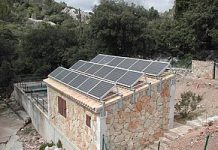NITI Aayog Releases Draft Battery Swapping Policy for Stakeholder Comments
By PIB Delhi
During the COP26 summit in Glasgow, India committed to reducing carbon emission intensity by 45%, taking our non-fossil energy capacity to 500 GW by 2030, meeting 50% of our energy requirements from renewable energy by 2030, and finally achieving the Net Zero target by 2070. The road transport sector is one of the major contributors to CO2 emissions and accords to one-third of the particulate matter emissions.
To decarbonize the transport sector, transition to clean mobility, led by electric vehicles, is paramount. Electric mobility represents a viable option to meet these commitments, while packed with innovative business solutions, appropriate technology, and support infrastructure. Several supporting initiatives have been implemented, such as the Faster Adoption and Manufacturing of Electric (Hybrid) Vehicles in India (FAME) I and II, and the Production Linked Incentive (PLI) for National Programme on Advanced Cell (ACC) Battery Storage (NPACC), to boost indigenous battery manufacturing capacity. State governments are developing complementary policies to promote EV adoption.
India’s e-mobility revolution is led by the two-wheeler (2W) and three-wheeler (3W) vehicle segments. 2Ws account for 70-80% of all private vehicles, whereas 3Ws play a critical role in last-mile connectivity in cities. While the upfront costs for EVs are typically higher than internal combustion engine (ICE) counterparts, these are offset by lower operations and maintenance costs over their lifetime which has brought the total cost of ownership of electric vehicles at par with ICE vehicles.
Battery swapping is an alternative that involves exchanging discharged batteries for charged ones. Battery Swapping de-links the vehicle and fuel (Battery in this case) and hence reduces the upfront cost of the vehicles. Battery swapping is popularly used for smaller vehicles such as 2 and 3-wheelers which have smaller batteries that are easier to swap compared to other automotive segments wherein the same can be implemented mechanically. Battery swapping offers three key advantages relative to charging: it is time, space, and cost-efficient, provided each swappable battery is actively used. Further, Battery Swapping provides a level playing field for innovative and sustainable business models such as ‘Battery As a Service’.
Considering the constraint of space in urban areas for setting up charging stations at scale, the Honorable Finance Minister in her Budget Speech 2022-23 announced that The Government of India will be introducing Battery Swapping policy and interoperability standards in order to improve efficiency in the EV Ecosystem.
In this regard, NITI Aayog held an inter-ministerial discussion to formulate a robust and comprehensive Battery Swapping policy framework in February 2022. NITI Aayog also held an extensive pre-draft stakeholder discussion with a wide spectrum of stakeholders representing Battery Swapping Operators, Battery Manufacturers, Vehicle OEMs, Financial Institutions, CSOs, Think Tanks, and other experts.
After due deliberations and taking cognizance of all the inputs provided by relevant stakeholders, NITI Aayog has drafted the Battery Swapping Policy. You may review the draft Battery Swapping Policy here:
https://www.niti.gov.in/sites/default/files/2022-04/20220420_Battery_Swapping_Policy_Draft_0.pdf
All the stakeholders are requested to submit their comments latest by 5th June 2022. You may submit your views in the google form by clicking here.




















